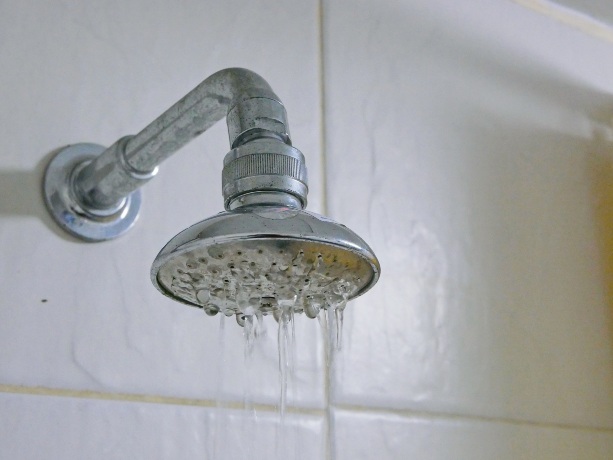
You turn on the tap for your refreshing morning shower, and instead of a steady stream, you get a pathetic dribble. Low water pressure is a nuisance in many Seattle households, turning simple tasks into frustrating and time-consuming chores. Explore the common culprits behind weak water flow and how to restore pressure to its full potential.
What’s Causing My Home’s Low Water Pressure?
The mystery behind feeble water flow can often be traced to a few common culprits, including:
- Debris buildup: Water pipes can become clogged with sediment like sand or dirt. This debris creates blockages, narrowing the flow paths for water and significantly reducing pressure at the tap.
- Corrosion: The insides of pipes can corrode over time, particularly in older systems made of galvanized steel. This corrosion leads to a buildup of rust and minerals, which constrict the water flow like cholesterol in an artery. In addition to decreasing your water pressure, other potential issues include leaks, bursts, and brown tap water.
- Partially closed water shutoff valve: The main shutoff valve controls your home’s water supply. While you should shut the valve during plumbing repairs and emergencies, leaving it partway closed prevents your home’s water pressure from reaching its full potential.
- Broken pressure regulator: Not all plumbing systems have this feature, but its purpose is to maintain a safe and consistent water pressure. If your regulator is broken or malfunctioning, you could experience a sudden change in water pressure.
- Plumbing leaks: Leaky pipes divert water from where it’s needed, often leading to a noticeable drop in pressure. Even small leaks can have a big impact over time.
- Water supplier issues: Sometimes, the issue lies with the municipal water supply, not your home’s plumbing system. In this case, widespread low pressure may affect your neighbors. Ask around to find out if others are experiencing the same issue. If so, your supplier is likely to blame.
Steps to Improve Low Water Pressure
Now that you know the most common causes of low water pressure, you can take steps to address each one. Here’s what to try:
- Clear out debris and corrosion: The best way to flush sediment and loose rust particles from your water supply lines is to run cold water for at least 20 minutes. If the water pressure improves during that time, you’re all set. However, if the pipes themselves are corroded, repiping services provided might be the only solution.
- Check the main water shutoff valve: Find this valve, often located inside near the foundation where water enters your home, and ensure it’s fully open. For lever-type valves, the handle should be in line with the pipe. For wheel-type valves, turn it counterclockwise until it stops, then back a quarter turn. If you can’t locate the valve or are unsure how to adjust it, call a plumber for help.
- Inspect the pressure regulator: If you have a pressure regulator, try adjusting it to see if it affects your water pressure. If there’s no change, you may need a licensed plumber’s help to replace it.
- Detect and fix leaks: Regularly inspect visible pipes for leaks and listen for the sound of running water when all the taps are off. If you find a leak, patching it might be a temporary fix, but you’ll likely need a plumber for a permanent solution that maintains proper water pressure and prevents property damage.
- Communicate with your water supplier: If you suspect the issue is with the main water supply, contact your utility company for information and estimated repair times. Keep in touch with them for updates until the problem is resolved.
Remember, while some of these fixes are within reach for a handy homeowner, others require the expertise of a licensed plumber. Don’t hesitate to call in a professional when the job is over your head.
How to Measure Water Pressure
A direct measurement is the best way to truly grasp the gravity of your water pressure woes. A pressure gauge attached to an exterior faucet tells you the exact pounds per square inch (psi) of your water flow. Standard residential plumbing systems operate around 40 to 60 psi, and maintaining pressure as close to 50 psi as possible is recommended. Regular checks with a pressure gauge, which you can buy inexpensively at your local hardware store, help you track your system’s health. This way, you can take action when numbers fall out of the normal range.
Is Fluctuating Water Pressure Normal?
While slight variations in water pressure are expected, significant and abrupt changes are not. A sudden drop could hint at a recent blockage or leak, while a spike might indicate a problem with the pressure regulator or municipal water supply. These symptoms should not be ignored. In fact, they warrant a professional plumbing inspection.
Fine-Tune Your Water Pressure
Plumbing systems with a functional pressure regulator offer a straightforward way to adjust your water pressure. This valve, typically installed near the water meter, has a screw that alters the pressure when turned. Tightening it increases pressure, while loosening reduces it. It’s a delicate process, though, and should be done incrementally to avoid damage or excessive pressure. If adjusting doesn’t restore balance, or you’re uncomfortable attempting it yourself, recruit a plumber’s help.
Call in the Professionals
Sometimes, a low water pressure issue is beyond the reach of your household toolkit. That’s when you should call in the pros. Licensed plumbers bring years of experience, specialized tools, and the know-how to fix even the most elusive plumbing problems.
Puget Sound Plumbing and Heating offers expert plumbing services in the Seattle area. With over two decades of experience, our family-owned business only hires the most skilled plumbers, promising quality service without the premium price tag. Our dedication to providing positive experiences draws customers back time and again whenever plumbing problems arise. For help troubleshooting your low water pressure issues, please call us at (206) 938-3219 or contact us online today.


